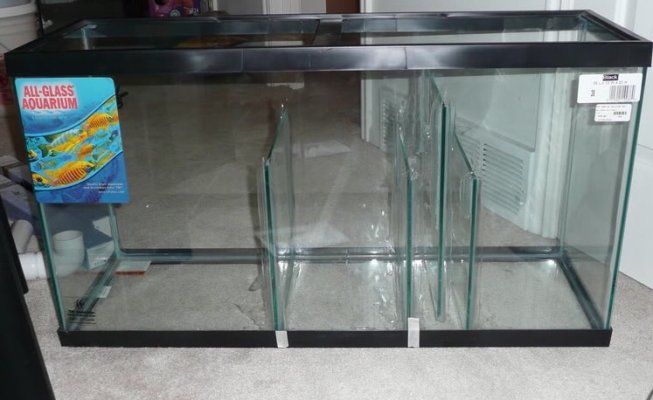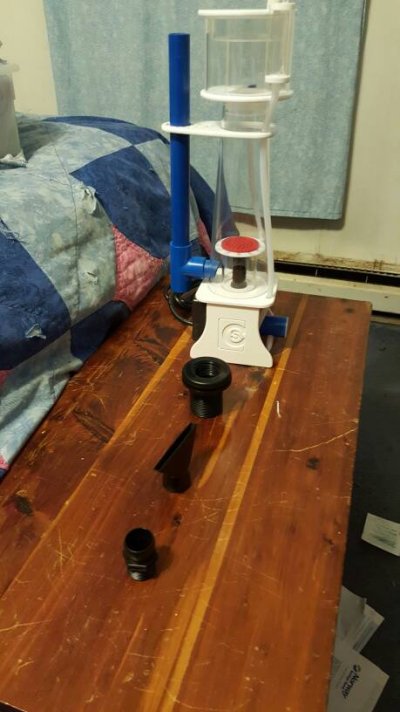Yes that will work but of course make sure you'll have the room for your equipment inside of it. You said your making your own sump right?
I found this image on google but this is exactly how mine is setup and is a VERY simple design.
Water comes down from my tank on the right side into a filter sock. The first chamber stays full of water even if the pumps are off. In the first chamber I have my skimmer. Water then flows over the first baffle and down through my biological media. Then water travels under the second baffle and up past my heater. This way water has to pass my heater and is constantly regulated. The second camber is the refugium where I have more bio media and some Chaeto. Again this chamber is always full of water even if the pump is off. Finally it overflows the last baffle to the return pump. The water in this chamber fluctuates depending on the pumps being on or off. In this last section you can add extra baffles to avoid micro bubbles. Doing a sump yourself is great because it's fully customizable to what you want. This has worked for me very well. It's important to note that you leave space above the tallest baffle and the top of the tank. That way if something clogs or stops working you have extra room for overflow. You'll also need to make sure your overflow from your tank is set at a height which if something stops working that your sump can hold all the extra water being dumped into it but not returning to the tank. I have my sump marked for different levels to where I know the water level is ok if a problem happens I know it won't flood my living room.
Sent from my iPhone using Aquarium Advice
I found this image on google but this is exactly how mine is setup and is a VERY simple design.

Water comes down from my tank on the right side into a filter sock. The first chamber stays full of water even if the pumps are off. In the first chamber I have my skimmer. Water then flows over the first baffle and down through my biological media. Then water travels under the second baffle and up past my heater. This way water has to pass my heater and is constantly regulated. The second camber is the refugium where I have more bio media and some Chaeto. Again this chamber is always full of water even if the pump is off. Finally it overflows the last baffle to the return pump. The water in this chamber fluctuates depending on the pumps being on or off. In this last section you can add extra baffles to avoid micro bubbles. Doing a sump yourself is great because it's fully customizable to what you want. This has worked for me very well. It's important to note that you leave space above the tallest baffle and the top of the tank. That way if something clogs or stops working you have extra room for overflow. You'll also need to make sure your overflow from your tank is set at a height which if something stops working that your sump can hold all the extra water being dumped into it but not returning to the tank. I have my sump marked for different levels to where I know the water level is ok if a problem happens I know it won't flood my living room.
Sent from my iPhone using Aquarium Advice

